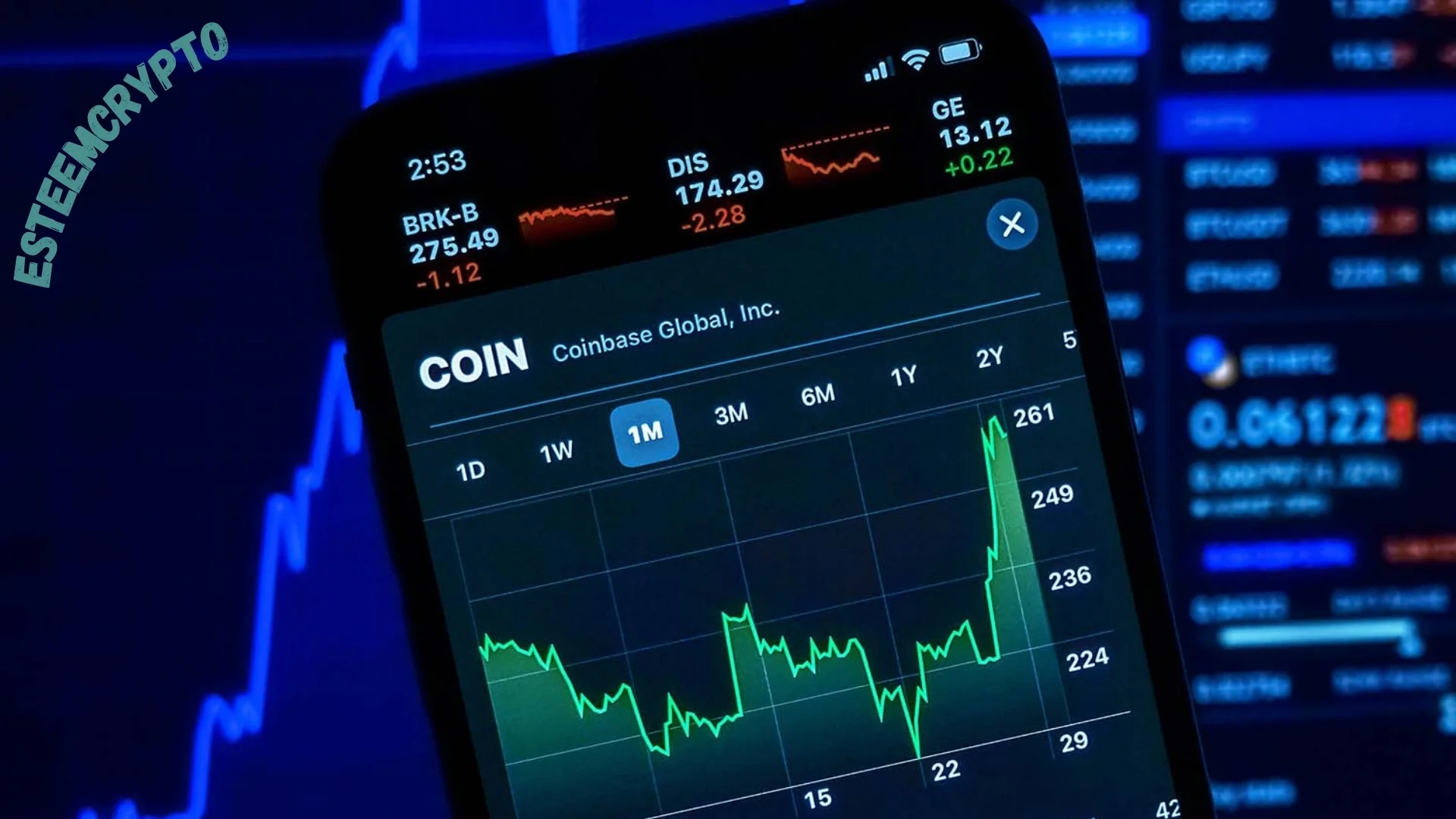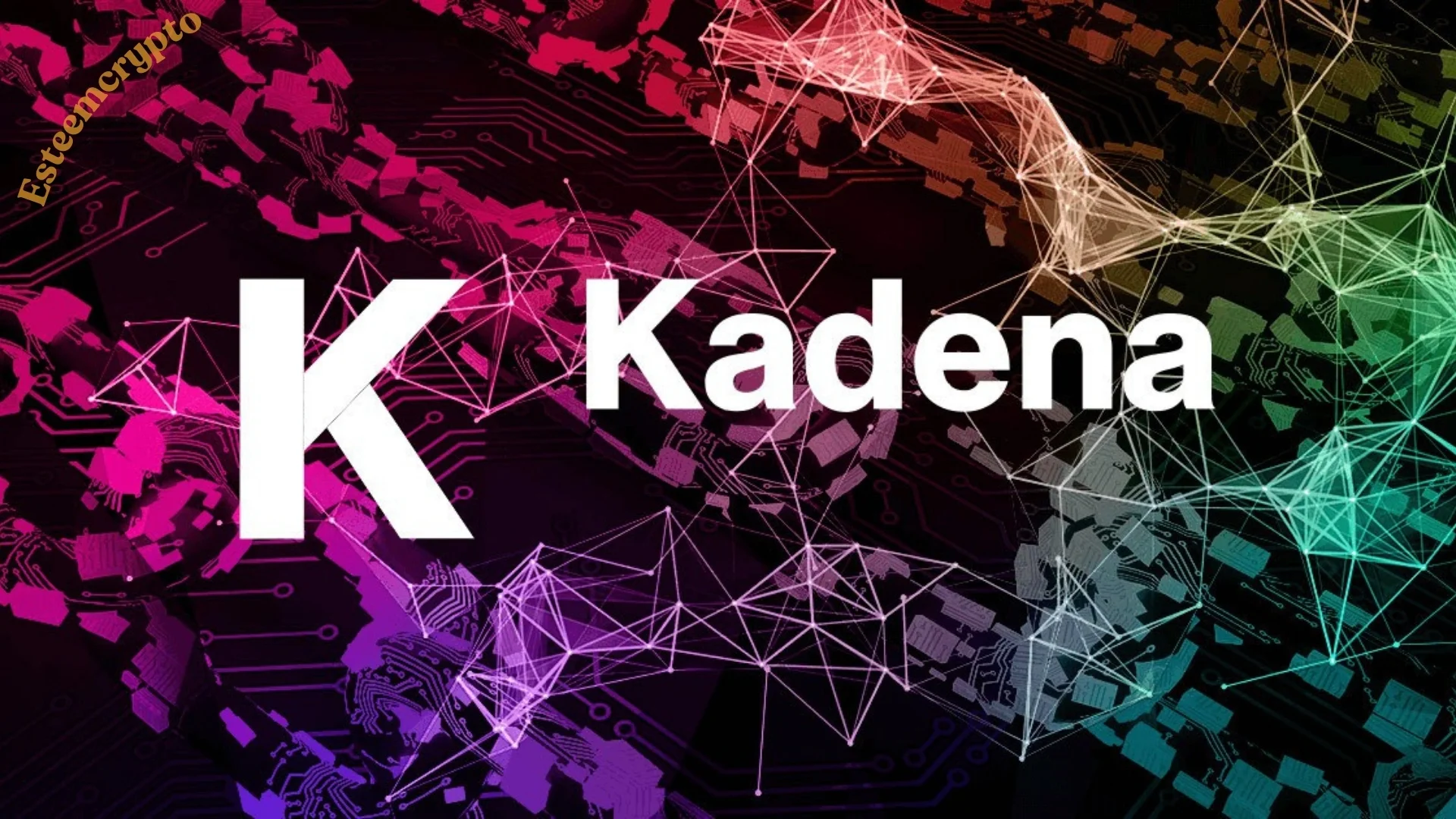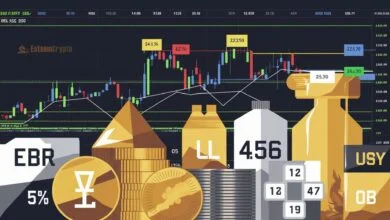What is Cryptocurrency Trading? A Deep Dive By Esteemcrypto

What is Cryptocurrency Trading? The thrilling realm of Bitcoin trading is yours to explore. Investors and traders from all over the world have been captivated by digital currencies as they have swept the financial markets in recent years. You have found the ideal site if you are interested in this cutting-edge financial frontier.
In this detailed tutorial, we will reveal the inner workings of cryptocurrency trading, take a look at its distinctive features, and emphasize the main differences between crypto and more conventional trading approaches. If you’re new to investing or just want to learn more about the ever-changing world of digital assets, this book is for you. It covers all the bases, from the basics to advanced strategies. One major benefit of crypto is that it relies on a decentralized system to record transactions, rather than a single authority to issue or regulate it.
Then, how is trading cryptocurrencies different from more conventional forms of trading? Secure your seatbelts and get ready for an exciting adventure as esteemcrypto explore the fascinating world of cryptocurrency trading and all the potential it presents.
What Is Cryptocurrency?
In January 2009, the Bitcoin protocol was announced by Satoshi Nakamoto, marking the arrival of the first cryptocurrency that could be used worldwide. The digital asset known as cryptocurrency functions quite differently from the traditional fiat money that we all rely on on a daily basis. One major difference is that unlike traditional currencies, there are no actual coins or notes representing cryptocurrencies; all of the money exists only online.
In contrast to fiat currencies like the US dollar or the euro, which are issued by governments or central banks, new cryptocurrency units are usually put into circulation through a technological procedure wherein computer-using volunteers from all over the globe participate.
For that reason, “decentralized” is a term that is often used to describe cryptocurrency. There is usually no central authority in any one nation that oversees or controls cryptocurrency. Thus, in order to safeguard and verify bitcoin transactions, a global network of volunteers is necessary. The nodes are the names given to these volunteers.
What Is Cryptocurrency Trading?
Trading digital assets between buyers and sellers is called “cryptocurrency trading.” That way, they can benefit when supply and demand drive up or down prices. Crypto trading is a high-reward, high-risk endeavor due to the unpredictable nature of the cryptocurrency market.
Cryptocurrency trading has only just begun. Nonetheless, the media has paid much attention to the recent spike in Bitcoin prices. There are a plethora of alternative digital assets (altcoins) to Bitcoin that may be traded on different exchanges. Crypto traders can acquire and sell digital assets at a greater price in minutes or weeks, depending on their trading strategy.
What Should You Know About Cryptocurrency Trading?
- A Cryptocurrency exchange is not affiliated with traditional stock exchanges.
- Beginners may prefer to trade cryptocurrency stocks because the market is open 24/7.
- The cryptocurrency market is extremely volatile. Therefore, crypto traders can take advantage of trading opportunities at any time.
- The elegance of the cryptocurrency market is that if we use the right strategy, we can make some profitable trades in both bull and bear markets.
Starting Your Crypto Trading Journey
Before you begin trading, it’s important to first ensure that you have the following:
- A cryptocurrency wallet (you can choose from paper, mobile, software, or hardware wallets)
- Access to a cryptocurrency exchange that will allow you to buy, sell, or trade digital assets.
How Does Crypto Trading Work?
The supply and demand for cryptocurrencies is what drives the market, just as it is for most financial markets. A cryptocurrency’s price often falls when supply outstrips demand, but it climbs when demand outstrips supply. If it were so easy, we’d all have millions. The decentralized nature of cryptocurrency markets means that they are not susceptible to the same economic and political issues that affect more conventional fiat currencies. Meanwhile, cryptocurrency markets are still very volatile.
There are a number of ways to look at the cryptocurrency market and find all the patterns. In the bitcoin market, for example, a bullish trend is defined as a sustained upward movement in price. When prices continue to drop for a long time, however, we say that the market is bearish.
How Are Cryptocurrencies Traded?
Many different methods exist for trading cryptocurrency. Buying and selling digital crypto coins on cryptocurrency exchanges is the first method. You can also trade cryptocurrencies on any platform that deals with derivative financial instruments, such Contracts for Difference (CFDs). Because it allows traders to speculate on the price changes of the cryptocurrency without really owning them and requires less cash expenditure, the latter has become increasingly popular in recent years. Due to leverage, CFD traders can start with a lesser margin and quadruple their earnings to increase their bets. Also, unlike when trading on an exchange, you won’t need a crypto wallet to hold your cryptocurrency holdings when you trade CFDs on cryptocurrencies. While leverage can boost gains, it can also raise losses, therefore traders should be aware that CFDs are risky investments.
Choosing to open a SELL or BUY position is the next step after choosing the cryptocurrency you want to trade. You can view the results below; whatever one you choose will launch a trading window. At this point, you can decide how many contracts to buy and whether to execute risk management orders like a Stop Loss or a Take Profit at a specific price. The following screenshot is for demonstration purposes only; in this example, the trader would click the SELL button to place a SELL trade.
What Determines Cryptocurrency Prices
- Cryptocurrencies are more scarce than traditional fiat currency due to their restricted supply. As a result, cryptocurrency prices are directly proportional to their demand and supply.
- Mining, the process of using computers to validate blocks on a cryptocurrency’s blockchain, is what creates new coins. A lot of power is required for this expensive procedure. The value of a cryptocurrency rises in direct proportion to its mining cost.
- The value of a cryptocurrency tends to rise as its traction rises and its number of competitors falls.
- Blockchain technology powers cryptocurrency, smart contracts, and the IoT, affecting the global economy. Due to their novelty and lack of legal tender status, cryptocurrencies have different market dynamics than established markets. Cryptocurrency trading is thus distinct from trading in more conventional financial markets.
- The decentralised structure of cryptocurrency markets means that variables like interest rate changes, political unpredictability, and data releases have less of an impact on cryptocurrency prices. On top of that, cryptocurrencies are still in their infancy as a financial tool, thus there aren’t many assets that directly correlate to them and could therefore influence their value.
- Blockchain technology and legislative initiatives to curb cryptocurrency trading and acceptance in financial markets affect cryptocurrency values. News on how a coin should be processed or updated can affect its price. A cryptocurrency’s value is likely to take a hit if its security is compromised and revealed by hackers. Cryptocurrency prices are susceptible to a number of factors, one of which is the prospect of government action to restrict or outright prohibit their sale.
Factors Impacting Crypto Assets
- Supply: The total number of coins in circulation, the rate at which they are released, burned, or lost, is referred to as the supply.
- Market capitalization: The total value of all coins in circulation and how users perceive it to develop. In general, the larger a cryptocurrency’s market cap, the more dominant it is presumed to be in the market. As a result, market capitalization is frequently considered the most important measure for ranking cryptocurrencies.
- Press coverage: The price of cryptocurrencies is heavily influenced by the media and the amount of coverage. The more attention a cryptocurrency gets, the greater its demand.
- Integration: This refers to how easily a cryptocurrency can be integrated into existing infrastructure, such as e-commerce payment systems.
- Major events: Cryptocurrency, unlike fiat currency, is not issued by a central bank or backed by a government. Moreover, purchasing a cryptocurrency differs from buying a stock or bond because Cryptocurrency is not a corporate entity. Thus, there are no company balance sheets or Form 10-Ks to examine. Therefore, major events that can drive digital currencies’ prices include regulatory updates from securities and exchange commissions, security breaches, and economic setbacks.
Cryptocurrency Pairings
It is common practice to buy one cryptocurrency using fiat money when one initially starts trading cryptocurrencies. While there are a plethora of cryptocurrency exchanges where we may purchase Bitcoin or Ethereum using fiat money, not all of them provide substantial crypto pairings. “A national currency, such as the US dollar, Great British Pound, Euro, Japanese Yen or Australian dollar, is called fiat currency.”
After we’ve mastered the basics, we can go on to trading pairs of digital currencies like Ethereum (ETH) and Bitcoin (BTC). Cryptocurrencies, similar to the currency market, are traded in pairs. Because of the shortened forms used by exchanges to describe pairings—for example, BTC/USDT, BTC/ETH, BTC/USDC—this can be confusing for novices.
Crypto Trading vs. Traditional Trading: What’s the Difference?
Exchanges for digital currencies have exploded in popularity in recent years, helping them break into the public thanks to technological advancements. The overall market capitalization of cryptocurrencies has surpassed $3 trillion, thanks to the boom in investment in digital currencies. Traders worried about losing out on big gains have taken an interest in the speculative ascent of blockchain technology and its many cryptocurrencies.
Since the stock market and the foreign exchange market are far less volatile, trading on cryptocurrency exchanges is very different. Plus, traders find forex and stock exchange intriguing because of the leverage used in these markets.
Crypto Trading vs. Traditional Trading Environment
There are certain parallels and contrasts between forex trading and cryptocurrency trading. Crypto trading refers to the purchase and sale of digital assets like cryptocurrencies, tokens, and NFTs (non-fungible tokens). However, in foreign exchange (Forex) trading, the goal is to swap one currency for another with the expectation. So the value of the traded currency will increase, yielding a profit for the trader. Cryptocurrencies and fiat currencies are comparable in that supply and demand determine their values. Crypto and forex are both driven by demand and supply, but the factors at work here are very different.
Market Capitalization
- Cryptocurrency Market Cap: The overall market capitalization of cryptocurrency is approximately $3 trillion. The first $1 trillion in combined valuations took 12 years to develop and another 11 months to add the next $2 trillion. Considering the decentralized nature of crypto, determining trading volumes is challenging, although estimates range from $100 billion to $500 billion daily.
- Forex Market Cap: However, determining the value of FX is more challenging. Economists can estimate the global economy’s overall value, estimated to be $80 trillion in 2017. The Bank for International Settlements (BIS) estimates the world’s foreign exchange trading volume every three years. The most current data was released in September 2019, when the BIS discovered that forex transacted $6.6 trillion per day, up from $5.1 trillion three years prior.
Ownership
- Forex: CFDs are traded and settled with the broker in the forex market. We do not obtain ownership of currencies traded with a broker unless we purchase them directly from the money market.
- Cryptocurrency: It differs significantly in terms of users and what they are meant to represent. For instance, many digital assets, like Ether (ETH), Basic Attention Token (BAT), and Vechain token (VET), are utility tokens designed to be utilized inside a blockchain-enabled environment and do not reflect a legal interest in the entity that issued them.
Liquidity
When purchasing and selling smaller crypto platforms or low-cap coins and tokens, investors may face a lack of liquidity. When investing micro-cap firms or OTC penny stocks, liquidity becomes a major concern in the stock market. But there is a lot of liquidity in the cryptocurrency and forex markets.
For this and other reasons, the daily volume of crypto trades is anticipated to be $100–200 billion, reaching a high of $516 billion in May 2021, in contrast to the $6.6 trillion traded in the currency market. This indicates that the foreign exchange market has liquidity that is twelve to sixty times higher than the cryptocurrency market.
Market Hours
You can access cryptocurrency markets whenever you like, even on holidays and weekends. The conventional wisdom holds that stock and bond markets should be open during certain business hours and closed on holidays and weekends. Traders from all over the world are able to take advantage of the fact that the cryptocurrency market is open 24/7.
Should You Invest in Cryptocurrency?
Trading cryptocurrencies necessitates the same set of abilities, expertise, and access to funds as trading any other type of financial asset. Make sure you have the necessary abilities for market analysis before you try your hand at trading cryptocurrencies. Note that cryptocurrency prices can rise and fall much more quickly than those of more traditional assets. Making them inherently risky than the average investor may be comfortable with. This volatility can boost your chances of making a profit, but it can also cause too-large losses.
Conclusion
Traditional trading and the crypto environment are quickly merging to create a new digital economy. Despite the fact that cryptocurrencies and traditional assets provide different investment options. Projects like Synthetix and Terra are utilizing synthetic assets to transfer conventional stocks on the blockchain.
Meanwhile, a strong network of oracles powered by blockchain is linking cryptocurrency markets to traditional financial databases. So crypto traders will soon be able to trade their favorite equities on decentralized marketplaces globally. Find out if you’re prepared by thinking about the unique qualities and dangers of each market. Choose wisely according to your comfort level with risk.








